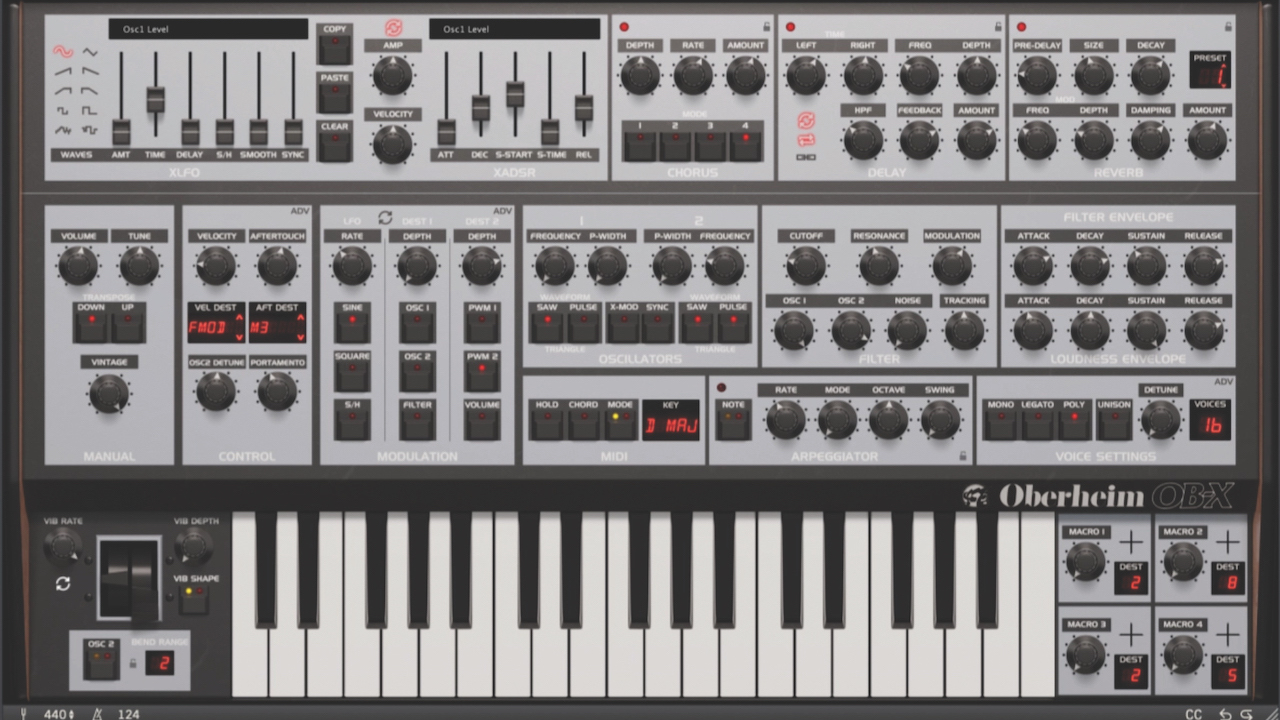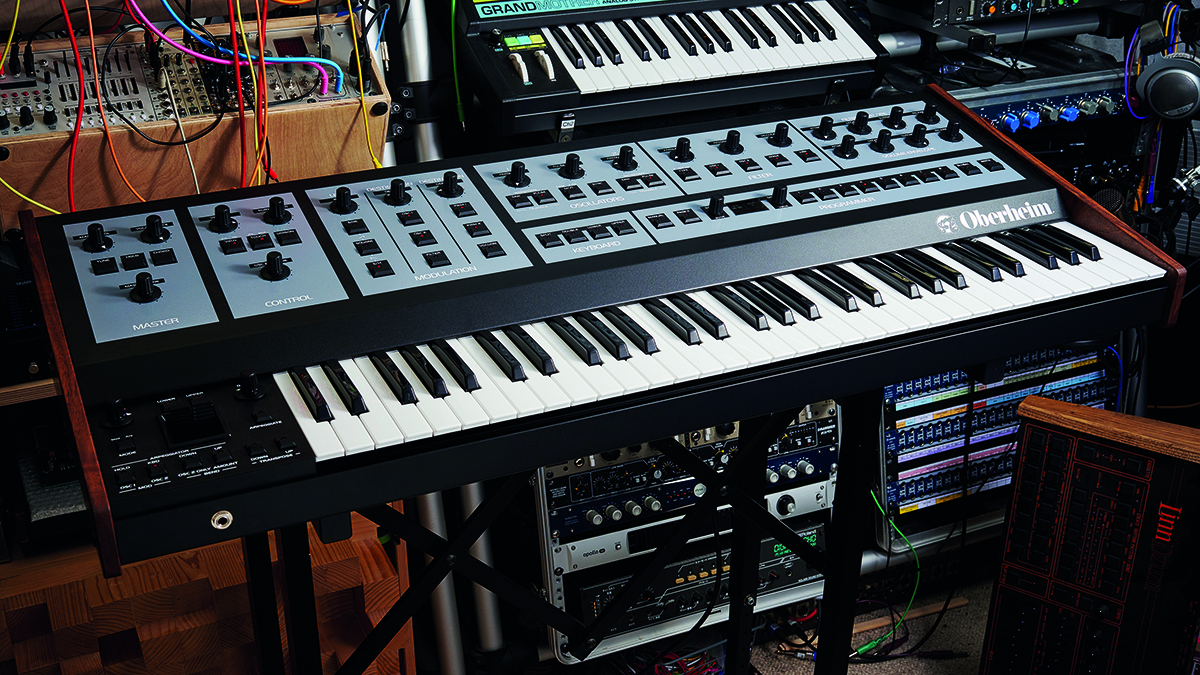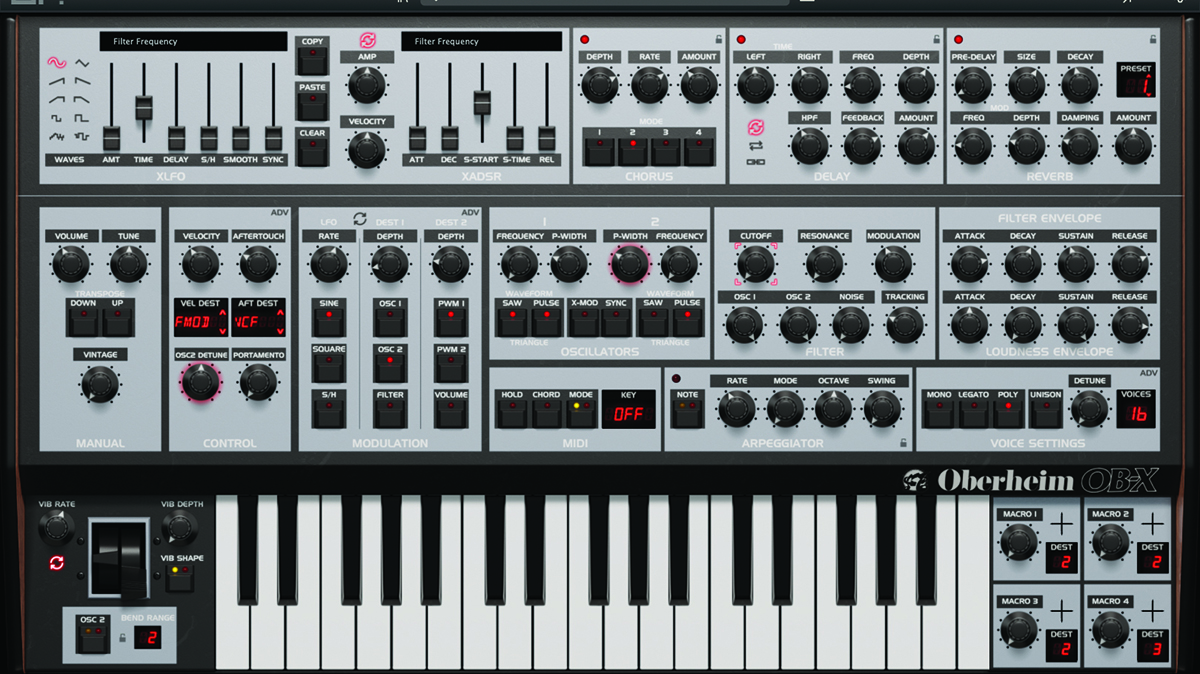The Great Synth Showdown: Oberheim OB-X8 hardware synth vs GForce Software OB-X
The polyphonic stakes are high...

This week on MusicRadar, we're stacking up hardware synths against their software counterparts as part of the Great Synth Showdown. In our third round, the modern-day classic Oberheim OB-X8 faces off against GForce Software's superb plugin emulation of the OB-X...
While Dave Smith was working on his version of a polyphonic synth, fellow US synth developer Tom Oberheim was also upping the polyphonic stakes. He’d already released the SEM, a single voice synth, way back in the ’70s and putting multiple versions of those together, could lay claim to the early polysynth plaudits.
But it would be his OB-X synth that, like Dave’s Prophet-5, would put everything in one basket, so to speak, and be the all-in-one synth that captivated players throughout the world. And while Kraftwerk and Gary Numan might have been making headlines over here with monosynths in the late ’70s and early ’80s, it would be American players with American keyboards like the Prophet-5 and OB-X that would spread the word.

Michael Jackson and Madonna used the Prophet-5 on Thriller and Like A Virgin respectively, while the OB-X was used by both in the early ’80s. If you didn’t know you could play more than one synth note before this time, then those big(gest?) names certainly brought polyphony to pop.
All of these extra voices came at a cost, though, and while OB-X had voice options (four, six, or eight), even the basic version cost well over $4000, so it would only be elite keyboard players who would buy it. The synth would quickly become the OB-Xa (think Van Halen’s Jump) and eventually the OB-Xb, machines that brought a more compact internal design less prone to instabilities, and used by everyone from New Order to Prince.
The hardware OB-X8 we’re using in this comparison is the latest Oberheim OB incarnation, a monster £4,500 synth with an analogue engine based very much on the OB-X, ‘a’ and ‘b’ architecture.

“The next best thing to a ‘real’ OB”: GForce Software OB-X review
As MusicRadar said in its review, this is “a beautiful synth and destined to be a classic in its own right. But there’s no escaping the fact that it won’t be affordable for many”. Which is where GForce’s OB-X emulation comes in, very much a tribute to the original OB-X synth and even made with Tom Oberheim’s seal of approval, but available for just £99.99 plus tax. A real bargain for the quality of the sonics.
Get the MusicRadar Newsletter
Want all the hottest music and gear news, reviews, deals, features and more, direct to your inbox? Sign up here.
If ever there was going to be a close run match, then, you’d think it would be this one. A Tom Oberheim (bank-breaking) monster synth vs (far cheaper) Tom Oberheim-endorsed software. Let’s go!
Oberheim OB-X: listen for yourself

We have five audio examples from our Oberheim OB-Xs above. These are not direct comparisons because neither version features exactly the same presets.
We picked similar sounds for you to compare instead, so you should get a flavour of both software and hardware and that flavour is one of great dynamic range, with both hardware and software reaching the lows and highs sonically, with very little to choose between them.
With a couple of the sounds, notably the piano and bass, we tried to program both hardware and software synths to match one another, as the interfaces are so similar – with varying results! As ever, the software signals were generated within the DAW and played directly into an Audient EVO 16, with no additional hardware.
The first example is the hardware, followed by the software. Let us know what you think at computermusic@futurenet.com. The audio is as follows…
1. Saw lead
Two similar saw-like sounds.
2. Sweeping bass sounds
One perhaps a little more sweeping than the other...
3. Harder bass
Unusual saw lead.
4. Analogue brass
Two quite different examples of analogue brass.
5. Simple pianos
Here we took the simplest piano sounds and tried to get them close.


Andy has been writing about music production and technology for 30 years having started out on Music Technology magazine back in 1992. He has edited the magazines Future Music, Keyboard Review, MusicTech and Computer Music, which he helped launch back in 1998. He owns way too many synthesizers.
“From a music production perspective, I really like a lot of what Equinox is capable of – it’s a shame it's priced for the post-production market”: iZotope Equinox review
"This is the amp that defined what electric guitar sounds like": Universal Audio releases its UAFX Woodrow '55 pedal as a plugin, putting an "American classic" in your DAW










